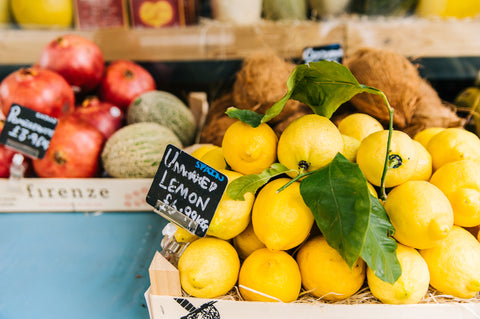What are Terpenes (AKA Terpenoids), what is their increasing role in Cannabis?

For many people, loose leaf is just a plant that gets people high and lazy and serves to be a minor annoyance (or a minor benefit) in their lives and they don’t give it much thought.
The bustling legal cannabis industry and millions of people disagree, but we’d wager that a large chunk of people are unaware of just how nuanced and deep the science of this plant actually is.
It’s what happens when there are decades of misinformation and several gaps in the knowledge that people have of the plant. The devil’s lettuce is probably growing in the very gardens of the people who frowned upon the dry herb, and they along with you are coming along for a wonderful ride.
What we’re talking about are terpenes, more accurately termed terpenoids.
They’ve been found in abundance in certain strains of cannabis and have been found in many plants, fruits,and vegetables around the world.
There’s like over a hundred strains that have over 150 types of terpenes. Growers and cultivators in the cannabis industry have come to realize just how valuable this compound is and that it can probably drive sales through the roof once people realize just how beneficial it is.
Before we get into that though, we’ll get into what it is: Terpenoids are compounds found naturally among several types of plants and vegetation that were evolutionarily (and naturally) developed by plants to fend off animals (predators, to be precise) and to lure pollinate to pollinate their seeds. It’s basically a type of smell emitted by a plant, and when that plant happens to be a weed plant, things get wild. Also, because, you know, nature and evolution? It actually is wild. Well, kinda. We’ll get into that.
Types of Terpenoids
There are multiple different terpenoids that you can find. Naturally, there are over 150 terpenoids one can find in a loose-leaf plant and thousands that you can find otherwise. The effects of these terpenoids vary substantially: some of them give a soothing and relaxed feeling, while others can make you feel energized and pro-active.

Terpenes are differentiated in a similar manner to Indica and Sativa strains: some make you feel relaxed while others energized and active
Sounds familiar? Well, it’s pretty similar to how Indica vs Sativa strains tend to work and terpenoids can be harvested to boost the effects (or create an interesting balance) in strains of loose leaf. The science of this is still pretty new and some things are still a question mark. We’ll get into them soon, but first, we’ll take a look at some of the commonly found terpenes in loose leaf.
Myrcene Terpene
This is perhaps the most commonly found terpene in loose leaf. Coincidently, this terpene is also found most readily in mangoes, thyme, and lemongrass. It’s known to help bolster feelings of calm and tranquil, helping people fall asleep given its properties that help deal with insomnia.
Myrcene is also used for its pain relief properties, with a study confirming it’s anti-inflammatory properties all the way back in 1990. People in Mexico have used myrcene in their drinks for the same, and along with its anti-oxidant properties, it’s really a game-changer. Germany has also historically used myrcene as a muscle relaxant and with Myrcene being the most dominant terpene in about 40% of all strains found, it’s likely that the strain you’re smoking has some myrcene in it.

Myrcene terpenes are some of the most common terpenes found in loose leaf and is commonly found in mangoes, thyme, and lemongrass
Some of the most popular strains with myrcene in it are Blue Dream, OG Kush, and granddaddy purple. When smoked, it has a nice earthy and clove based smell. It may depend a little on the strain and what alterations have been done to the strain though.
Limonene Terpene
As the name suggests, this terpenoid is commonly found in citrus-based fruits - oranges, lemons and even plants like peppermint and rosemary. Limonene is a stress reliever and helps make you feel energized and uplifted. It’s also been found to be helpful with anxiety and is beneficial in treating skin inflammations and wounds due to limonene being an anti-inflammatory.
Limonene isn’t exactly a new discovery, with the compound being used in several food products and packaged beverages for a long time, but due to its (relatively) new association with cannabis, people have wrongly assumed that limonene has psychoactive properties, which isn’t true. It is found naturally in cannabis and is a dominant terpenoid in 14% of all strains found.

Limonene is found in most citrus fruits, is an energizer used in several food items, beverages and packaged items and is found naturally in many strains of cannabis
Some popular strains that have limonene include OG Kush, Lemon Haze and Sour Diesel. It has a nice earthy smell with a hint of citrus, but this depends on the strain (lemon haze is much stronger in this citrusy smell, for example).
Pinene Terpene
Pine’s have the Pinene terpene, who woulda thought?! Jokes aside, this terpene is found in pine needles, of course, but is also abundant in orange peels, basil leaves, and rosemary.
Pinene is a relaxant that helps with stress and anxiety and also has anti-inflammatory properties that help with pain relief. An important aspect of Pinene that might just make it instrumental in THC heavy strains is that it can help combat the short term memory loss issues that people who smoke/vape THC know all about.
Currently, there’s very little market research done and all the information we currently have is from scientific research (pinene is one of the most researched terpenes), but if this proves to be correct, it can really make a difference.

Pinene is commonly found in pine needles but is also found in basil leaves and orange peels, with a distinctive quality being that it helps combat short term memory issues
Pinene is found in 4% of all strains that have terpenoids in them and is found in Snoop’s dream (errydayy) and Royal Jack Automatic, named after writer and cannabis activist Jack Herer. Pinene’s presence in strains makes it smell like a fir tree, just a little, along with the usual cannabis smell.
Caryophyllene Terpene
Also known as Beta-Caryophyllene, caryophyllene is the second most abundant terpenoid found in strains at 30% and is found commonly in Bubba Kush and the world-famous, Dutch bred White Widow that’s among the most commonly found strains in Amsterdam’s coffee shop.
Caryophyllene is a balanced terpene: it means that it doesn’t have properties that makes it a relaxant or an energizer, and is hence usually found in strains that are a balanced hybrid, which is what white widow is popular for, among other things, of course.
Caryophyllene is the 2nd most common terpene found in dry herb strains and is found amply in black pepper and cloves, with its balanced nature and aid in brain health being distinctive
Caryophyllene is commonly found in black pepper, cloves, and rosemary, with it being helpful for anxiety and depression while also being notably helpful in improving brain health, something that might be helpful for loose leaf users who are under twenty-five. It’s also an anti-oxidant and an anti-inflammatory.
Why Terpenoids are becoming more important in the loose-leaf market
Researchers have found that the compounds of cannabis (cannabinoids) have been working in synergy with terpenes, forming what’s known as the entourage effect: where two or more compounds react with one another and have a significant effect on the overall reaction.
This is what’s been happening with cannabis strains for a while now and with terpenoids featuring properties similar to Indica heavy vs Sativa heavy strains (relaxed vs energized), we’re now seeing how crucial terpenes can be in the overall effect that a consumer may feel when having a strain that’s carefully cultivated to hit the right balance.
Some cultivators have been pushing the percentage of terpenoids to inordinate levels (more than 20% while the average is less than 5%) and it’s unclear what the effects of this can be, but some researchers are advising caution.
Terpenoids have been found to be massively beneficial in improving the stability and safety of vaping products
This also goes for vaping users, as there’s some confusion as to whether it may be helpful to boost terpenoid concentration in an oil-based formula. However, it has also been found that combining terpenes with phytol has improved the stability, performance and safety of vaping products, so there might be some major good news on the horizon soon.
Currently, the concept of terpenoids in the cannabis industry is not as popular as the differentiation between CBD and THC, for example, but cultivators, wholesalers, and loose-leaf shops are jumping on the bandwagon due to some groundbreaking discoveries, so it won’t be too long before people start to hear more and more about the entourage effect and just how wonderful terpenes can be.
How long that will take is a mystery and there also needs to be some clarity about the concentrations of terpenoids that cultivators have begun altering in strains to push the effectiveness of a strain as there’s a possibility that this might pose a safety issue to regular users, especially vapers given that high concentrations of terpenes can cause a burning sensation in the throat and tongue.
How to get high on Cannabis?
You've planned it so well. You have your marijuana, your favorite treats and fresh water. You had your comfortable dresses in your comfortable spot, ready to go back to your favorite music, movies or YouTube channel. But you don't experience the high you've been waiting for when you light up....
We all know this situation... Here are some tips on how get high! <---read more here.
However, in the large scheme of things, this can be seen a positive change that might change perceptions of people about the health benefits that cannabis has, which is always a victory.




